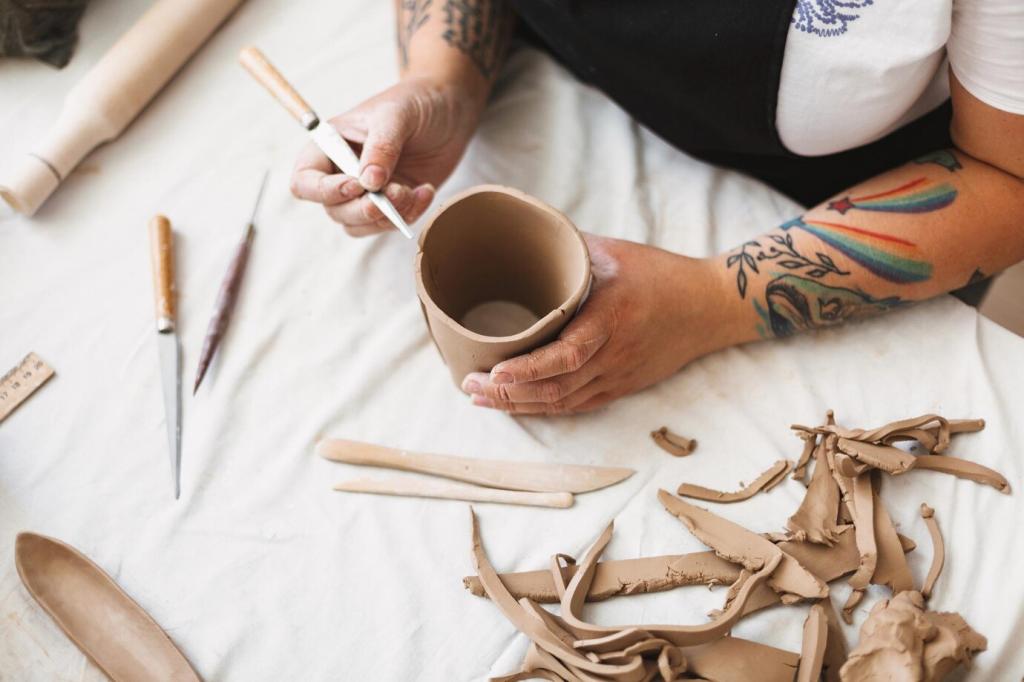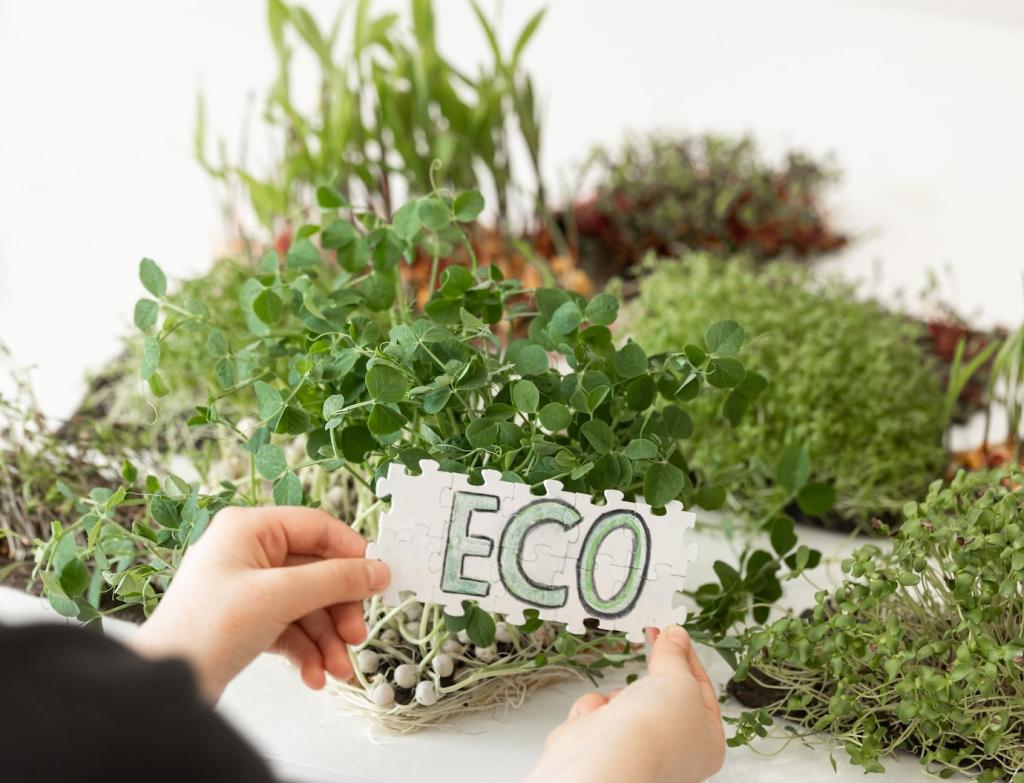Repurposing Vintage Fabrics for Home Decor Accents
Finding and Choosing the Right Vintage Textiles
Visit flea markets, estate sales, and charity shops with a clear list: look for sturdy weaves, stable dyes, and motifs you genuinely love. Ask vendors about origins, snap quick photos for pairing later, and share your finds with our readers to get feedback before cutting or sewing anything.

Design Principles for Repurposed Accents
Pair a small ditsy floral with a bold stripe to keep rhythm and contrast. Repeat a color at least three times across the room for harmony. Post your swatch pairings in the comments, and we’ll suggest complementary textures to help your vintage accents feel curated, not cluttered.
Beginner-Friendly Projects to Try First
Envelope Cushion Covers from Old Curtains
Cut rectangles, hem short ends, overlap to form an envelope, and stitch around for a no-zipper finish. Use sturdy barkcloth or heavy cotton for structure. Share your before-and-after photos, and tag your fabric’s origin story to inspire fellow beginners to try their first cushion project.
Patchwork Lampshade Refresh
Adhere small fabric panels to a plain shade with fabric-safe adhesive, staggering prints for playful rhythm. Bind the edges with bias tape made from the same textile. Comment with your night-time glow shots and subscribe for our template pack sized to common drum and empire shades.
Heirloom Table Runner with Lace Insets
Frame delicate lace within sturdier linen borders to protect fragile sections while highlighting detail. Stabilize with a lightweight fusible interfacing if needed. Share your family anecdotes tied to the lace, and we’ll feature a reader story each month celebrating memory-rich dining moments.
Advanced Techniques for Fragile or Tricky Textiles
Mount fragile silk or rayon atop fine cotton lawn or muslin, quilting lightly to distribute stress. Use a walking foot to reduce shifting. Tell us which fabrics intimidate you, and subscribe for our video walkthrough on creating invisible support layers that keep heritage textiles usable.
Advanced Techniques for Fragile or Tricky Textiles
Employ thread painting to blend color, and Swiss darning for neat reinforcement. Match fiber content and sheen closely. Share close-up photos of your repairs, and ask questions—our community loves offering gentle critique that elevates both technique and confidence in restoring vintage charm.


Care, Cleaning, and Preservation for Daily Use

Gentle Cleaning That Respects Age
Spot-test every time. Use cool water, pH-neutral soap, and a flat dry on towels to avoid distortion. Avoid wringing; roll to remove moisture. Share your fabric mishaps or success tips, and subscribe to receive our stain reference guide tailored to common vintage fibers like linen and rayon.

Sunlight, Storage, and Pest Defense
Rotate displays to minimize UV fading, and store off-season pieces in breathable cotton bags with cedar or lavender sachets. Avoid plastic that traps moisture. Ask for our seasonal care checklist in the comments, and tell us which climate challenges you face at home with vintage textiles.

Labeling Stories and Keeping Records
Attach discreet tags noting origin, decade, and any family narrative. Photograph each piece styled in your space and save care notes. Share your cataloging approach, and we’ll compile a reader-sourced template that helps preserve emotional value right alongside practical maintenance information.
Styling, Storytelling, and Sustainable Impact
Combine nubbly linen with smooth sateen, and offset florals with grounded solids. Repeat textures across throws, cushions, and lampshades. Post your layered vignettes, and we will highlight reader setups that capture the cozy balance between personality, usefulness, and the vintage fabric’s original character.

